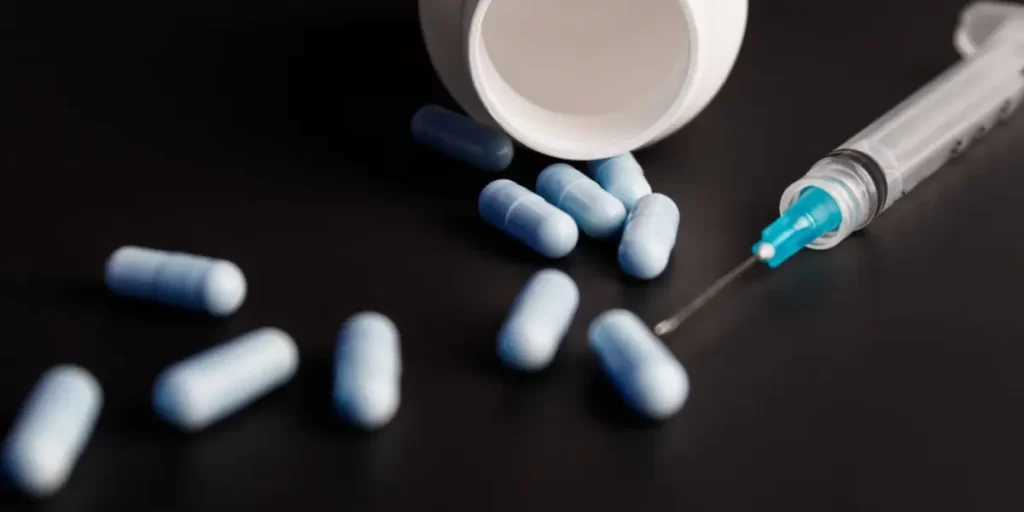What are common Fentanyl Overdose Symptoms?
Written by Theresa Valenzky
& Medically Reviewed by Benjamin Caleb Williams, RN
Medically Reviewed
Up to Date
Last Updated - 6/17/2022
View our editorial policy
Synthetic opioids are some of the most common drugs involved in drug overdose deaths, and fentanyl is one of the most potent. What’s worse, many other illicit drugs are often laced with fentanyl, leading to the person unknowingly using the substance, with a high chance of overdose. If your loved one uses drugs, understanding what fentanyl overdose symptoms look like can potentially save their life.
What Is Fentanyl?
Fentanyl is an opioid drug used both medically and recreationally. Fentanyl is best known for being the strongest opioid to be deliberately used in humans routinely. Only carfentanil is more potent but is so strong that it is generally fatal in humans and is only used to tranquilize large animals, such as elephants.
Side Effects of Fentanyl
Fentanyl suppresses the central nervous system, inhibiting pain and releasing endorphins that can cause it to become addictive. Like other opioids, the side effects of fentanyl are all primarily due to its impact on the nervous system. The side effects of fentanyl can include:
- Relaxation
- Euphoria
- Decreased pain
- Constipation
- Nausea and vomiting
- Sedation
- Drowsiness
- Urinary retention
- Constricted pupils
- Confusion
- Slowed breathing
- Coma
Someone overdosing on fentanyl will generally experience the most severe side effects of slow breathing and decreased responsiveness. This can lead to death if not quickly treated.
Lethal Dose of Fentanyl
As little as 2 mg of fentanyl, or the weight of a mosquito, is enough for a lethal dose. Most prescriptions for fentanyl are dispensed in micrograms, which is a thousand times less than a milligram, for the patient’s safety. No one will know just how much fentanyl it takes to overdose.
Most people do not overdose on purpose. Accidental fentanyl overdoses can occur for many reasons, including:
- Not understanding how powerful the drug is
- Consuming another drug spiked with too much fentanyl
- Taking someone else’s fentanyl prescription, since the amount to overdose differs from person to person
- Illegal fentanyl production is unregulated, so no one knows how much fentanyl they will consume from illicit batches
There is also no firm answer to the question, “How long does it take to overdose on fentanyl?” Fentanyl can act quickly on the nervous system. A fentanyl overdose can produce lethal effects right away. If someone begins exhibiting overdose symptoms, do not hesitate to call 911.
Symptoms and Signs of Fentanyl Overdose
Due to the potency of fentanyl, it is important to understand fentanyl overdose symptoms and what a fentanyl overdose looks like. Although symptoms differ, visible signs of fentanyl overdose are similar to those of other opioids, including:
- Slowed or stopped breathing
- Drowsiness
- A reduced level of consciousness
- Nausea or vomiting
- Dizziness
- Limp body
Side effects of a fentanyl overdose can be long-lasting and cause permanent damage due to a lack of oxygen to the brain if breathing stops.
Fentanyl Overdose Statistics
Fentanyl overdose statistics showcase the widespread danger that fentanyl poses to drug users. Synthetic opioids, like fentanyl, are the drugs most commonly involved in overdose deaths. In the U.S., from 2010 to 2016, deaths from synthetic opioids increased by 3,007 to 19,413. According to a 2019 CDC report, 18,335 opioid overdose deaths in 2016 were related to the use of fentanyl.
Fentanyl Overdose Death
Fentanyl overdose deaths continue to rise, and illegally made fentanyl cut into other drugs is part of what continues to propel this concerning statistic. The risk of fentanyl overdose is primarily due to people unknowingly consuming fentanyl. A person may regularly consume a drug in the privacy of their home without experiencing any adverse side effects. But if that drug is cut with fentanyl, they may unknowingly ingest the fentanyl and overdose. If no one is around to help them, there is a high chance that the overdose will become fatal.
Treatment for Fentanyl Overdose
Fentanyl overdose treatment needs to be handled by professionals. Drugs are available in the case of overdose. However, fentanyl overdose reversal is not simple. Naloxone is available for use during an overdose, but it is important to note that naloxone is not meant to replace a hospital, as the symptoms of overdose often outlast the therapeutic action of naloxone, making additional care necessary.
Naloxone (Narcan)
Naloxone, also known by its brand name Narcan, is an antidote to fentanyl overdose that can restore breathing temporarily until emergency responders arrive. Naloxone blocks opioid receptors temporarily and stops the action of fentanyl. Kits are often available for people who regularly use drugs and come in spray or intramuscular injectable forms. Naloxone side effects are often related to the rapid opioid withdrawal it creates and can include:
- Increased blood pressure
- Muscle and joint pain
- Headache
- Nasal pain, dryness and swelling in nasal spray formats
Naloxone does not cure opiate withdrawal, and naloxone can cause a person to go into a withdrawal state quickly. While the side effects will often be uncomfortable, naloxone use can save a person’s life.
Fentanyl Overdose Prevention
If you’re on a prescription or using a drug illicitly, keep the following suggestions in mind to help prevent an overdose:
- Always follow a doctor’s and pharmacist’s prescription instructions.
- Dispose of fentanyl patches properly.
- Have a friend nearby during drug use who can help if an overdose occurs.
- Avoid taking fentanyl and alcohol or other drugs at the same time.
- Avoid using drugs that medical assistants will have a hard time accessing.
- Keep a naloxone kit on hand.
- Call 911 immediately if an overdose is suspected.
The best way to avoid an overdose is to stop using drugs altogether. If you’re affected by a substance use disorder, recovery can be challenging to achieve on your own. The Recovery Village Ridgefield has experts ready to help with recovery from substance use of all sorts. Call us today to speak with a representative about how addiction treatment can help you.
Sources
Anderson, L. “Fentanyl Abuse: Top 11 Facts About This Potent and Deadly Opioid.” Drugs.com, March 8, 2019. Accessed July 24, 2019. Fentanyl Safety for First Responders. “Naloxone.” Accessed July 24, 2019. National Institute on Drug Abuse. “Fentanyl: Drug Facts.” February 2019. Accessed July 24, 2019. Colon-Berezin, C; Nolan, ML; Blachman-Forshay, J; Paone, D. “Overdose Deaths Involving Fentanyl and Fentanyl Analogs – New York City, 2000-2017.” MMWR Morb. Mortal Wkly. Rep., 2019. Accessed July 23, 2019. Centers for Disease Control and Prevention. “National Vital Statistics Report.” March 21, 2019. Accessed August 9, 2019. United States Drug Enforcement Administration. “Fentanyl.” 2022. Accessed August 9, 2022. National Institute on Drug Abuse. “Overdose Death Rates.” January 20, 2022. Accessed August 9, 2022.
View Sources
Anderson, L. “Fentanyl Abuse: Top 11 Facts About This Potent and Deadly Opioid.” Drugs.com, March 8, 2019. Accessed July 24, 2019. Fentanyl Safety for First Responders. “Naloxone.” Accessed July 24, 2019. National Institute on Drug Abuse. “Fentanyl: Drug Facts.” February 2019. Accessed July 24, 2019. Colon-Berezin, C; Nolan, ML; Blachman-Forshay, J; Paone, D. “Overdose Deaths Involving Fentanyl and Fentanyl Analogs – New York City, 2000-2017.” MMWR Morb. Mortal Wkly. Rep., 2019. Accessed July 23, 2019. Centers for Disease Control and Prevention. “National Vital Statistics Report.” March 21, 2019. Accessed August 9, 2019. United States Drug Enforcement Administration. “Fentanyl.” 2022. Accessed August 9, 2022. National Institute on Drug Abuse. “Overdose Death Rates.” January 20, 2022. Accessed August 9, 2022.
Authorship



